The Ohio State University | Design Media 3 | Autumn 2022
Project Roles
Giulia Blake | Visual Communication Design | Environment Designer
Mekayla Gladman | Visual Communication Design | Sound Designer
Jaelyn Johnson | Industrial & Systems Engineering | Interaction Designer
Description
ToyBox is an interactive first-person virtual reality experience that puts you in the shoes of a young Jewish child living in Nazi Germany during WWII. The entire experience takes place within the child's bedroom and the player is given the opportunity to experience what it was like to play as a child in this time period. We chose this experience because it would allow the player to experience a piece of a major historical event in a safe environment, and the ability to play with toys that are accurate for the time period. ToyBox was built entirely in Unity, and is meant to be played on the Oculus Quest 2. Additionally, our experience is playable in stationary mode.
Process
To develop our concept, we started by creating a visual board for what we wanted our experience to look and feel like. We also created some concept art for the main items we wanted to include in the room, including, a bed, pictures, a window, and a toybox. We also created two personas for users who would be using our experience.
After flushing out our overall idea for the assignment, we had to decide on a "vertical slice" or one aspect of the project to focus on building due to time limitations. We decided to focus on the opening scene and interacting with the toys.
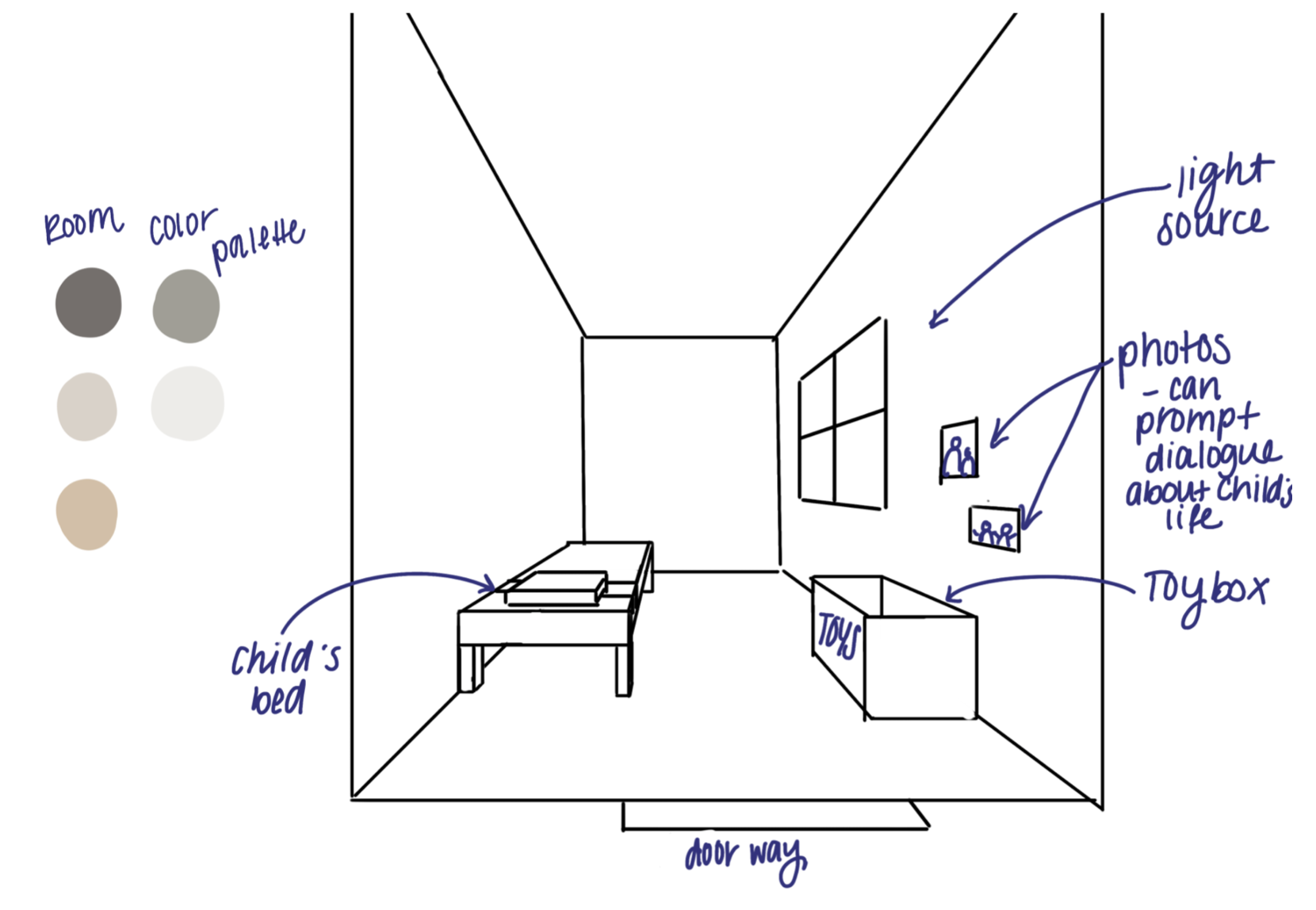
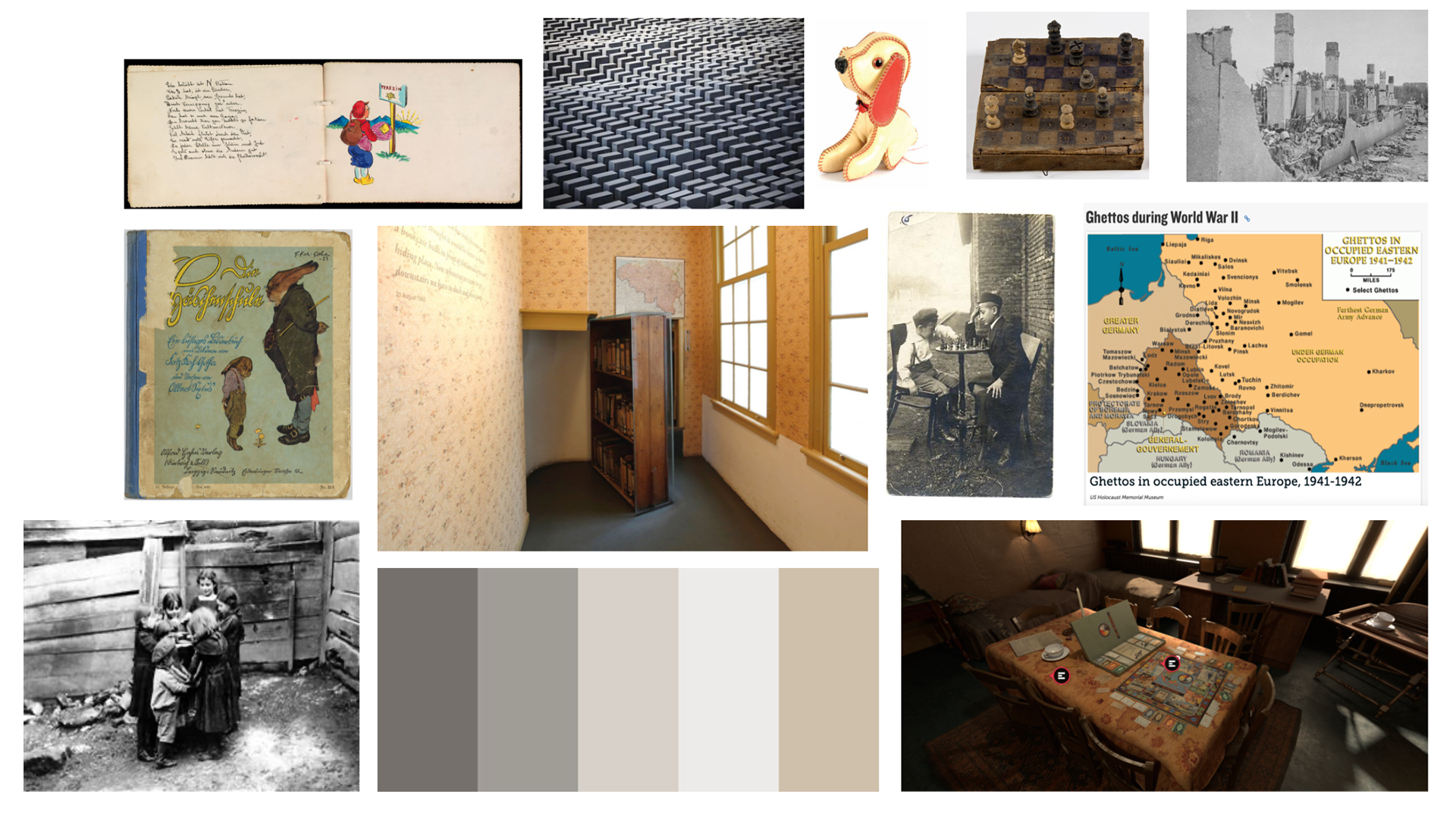
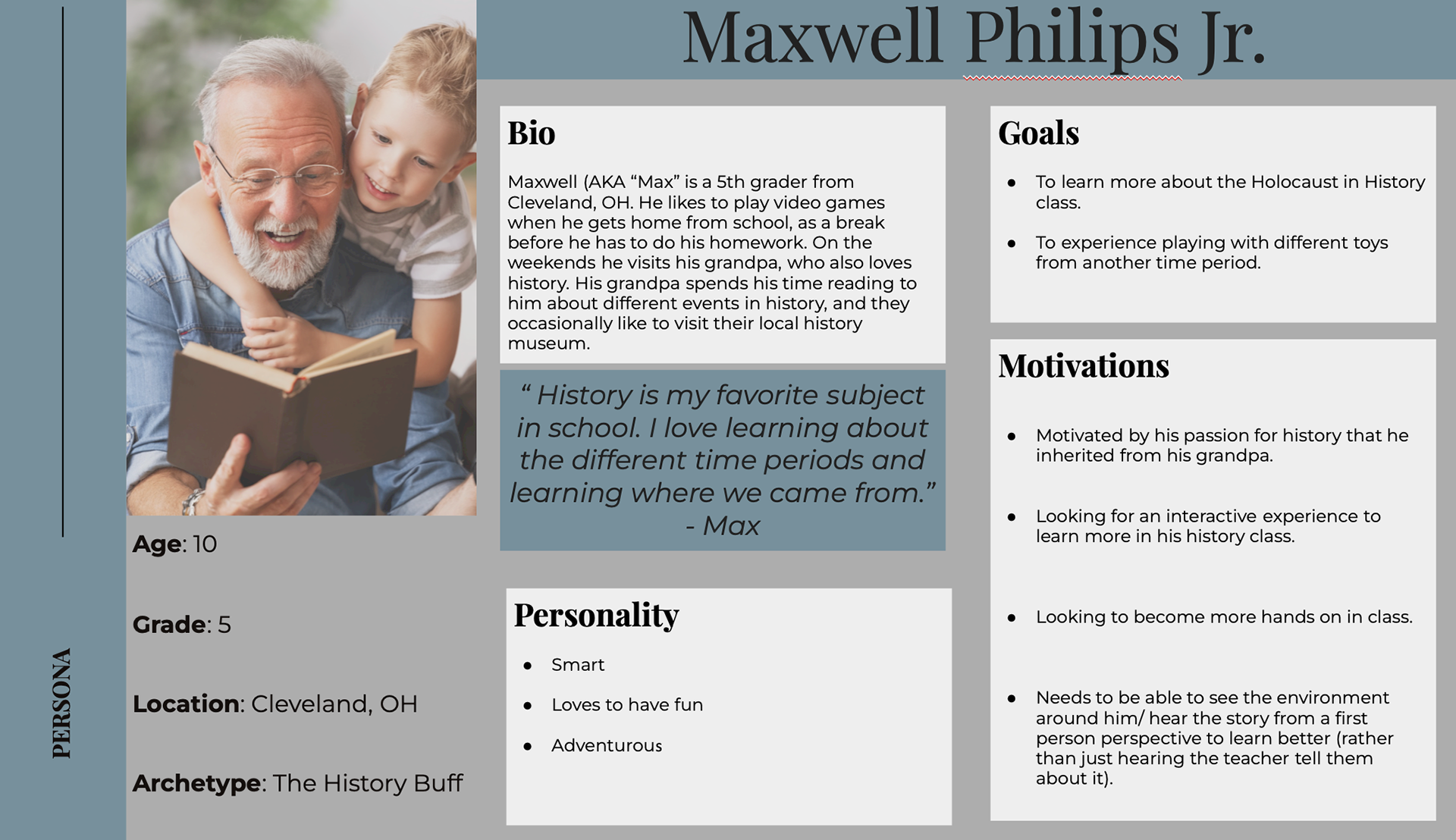
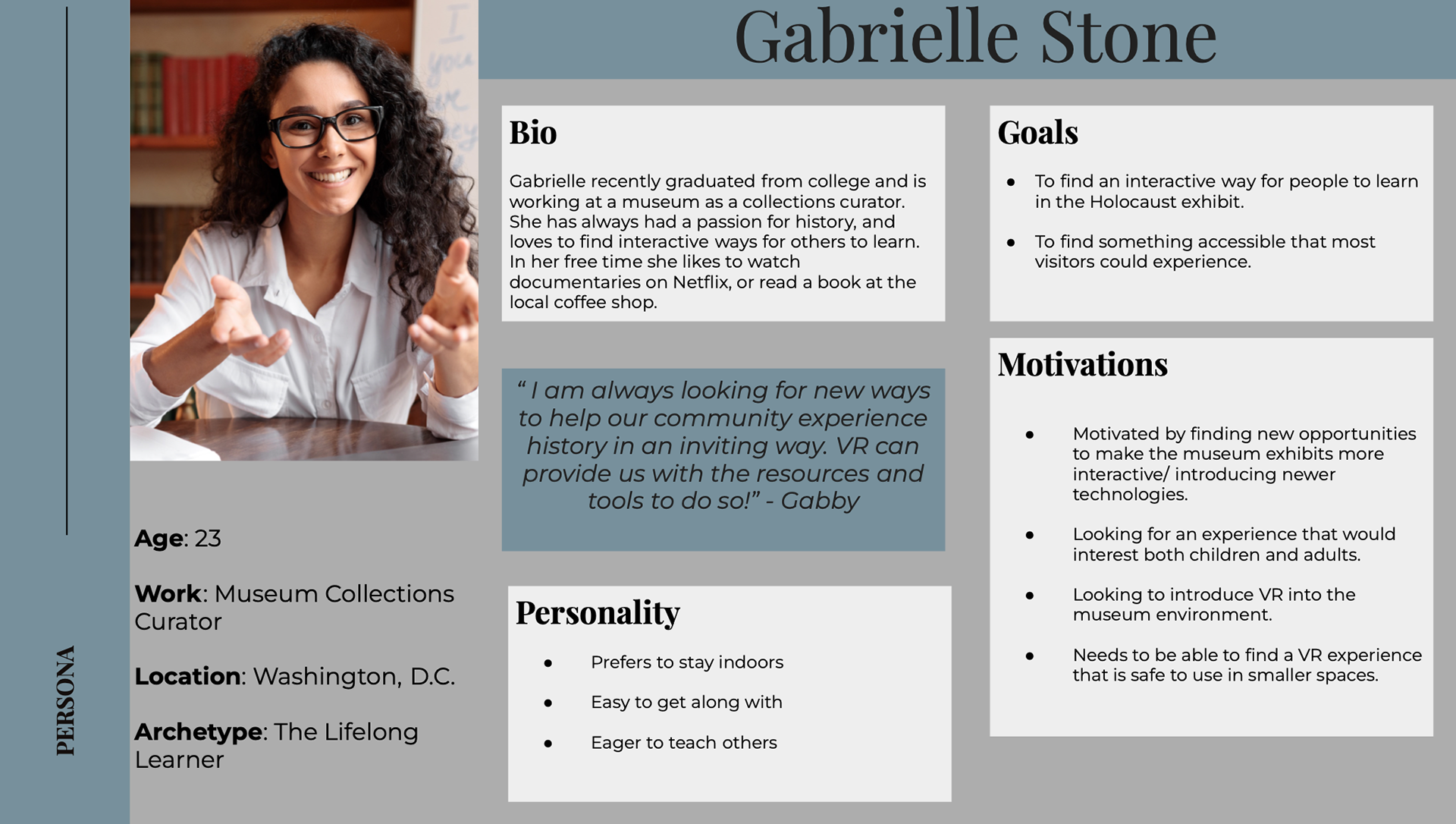
Environment Design
My main contribution to this assignment was the environment design. All pieces within our scene were found using online resources such as Turbosquid and CGTrader, or they were created by us. The look of our room was also greatly inspired by the Anne Frank House. We also focused a lot on the scale of the objects within the room. To allow the player to feel like they’re really embodying a child, we adjusted the scale of the room and the height of the player camera so the player’s view would better represent a child’s perspective regardless of their height.
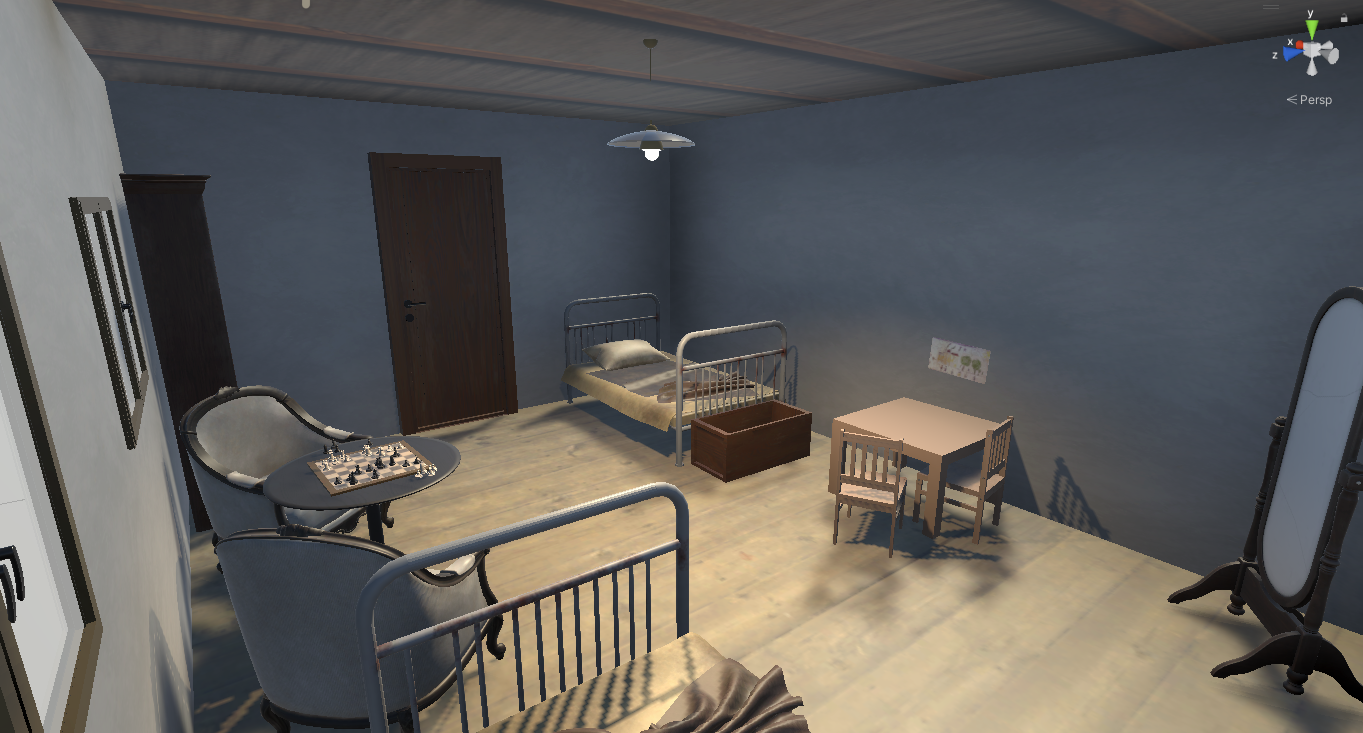
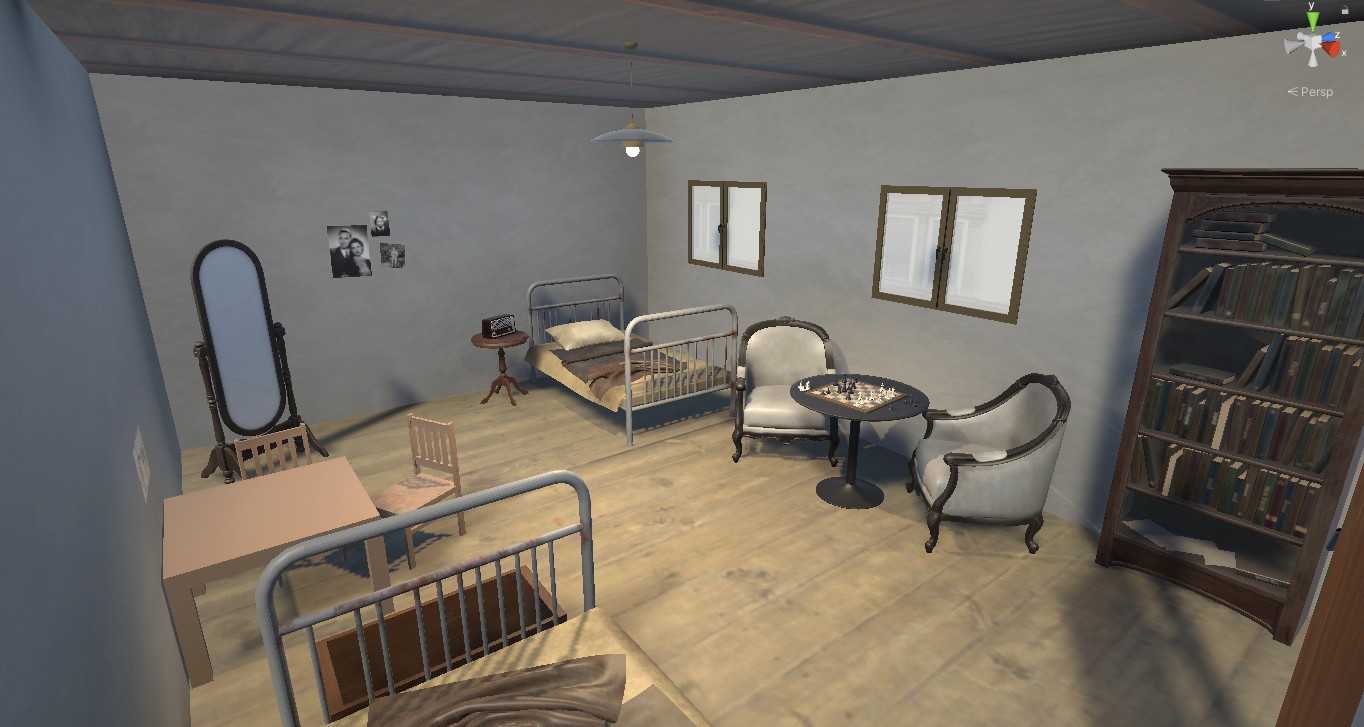
Reflection
In our experience, we mainly focused on the types of toys that the children from this time period would have played with. There is room within the game to add more learning experiences and help the player feel like they are really living within the time period. If we had more time to work on the project we would add the following:
A scene with a point of conflict for the character, we called it “The Hiding Scene”. The player would be interrupted while playing and have to hide in response to officers knocking on the front door. This scene would help convey that living during this time period wasn’t as peaceful as depicted in the child’s bedroom.
Implementing more historical information to the gameplay.
Accessibility features such as subtitles for all of the narrations included in the game.